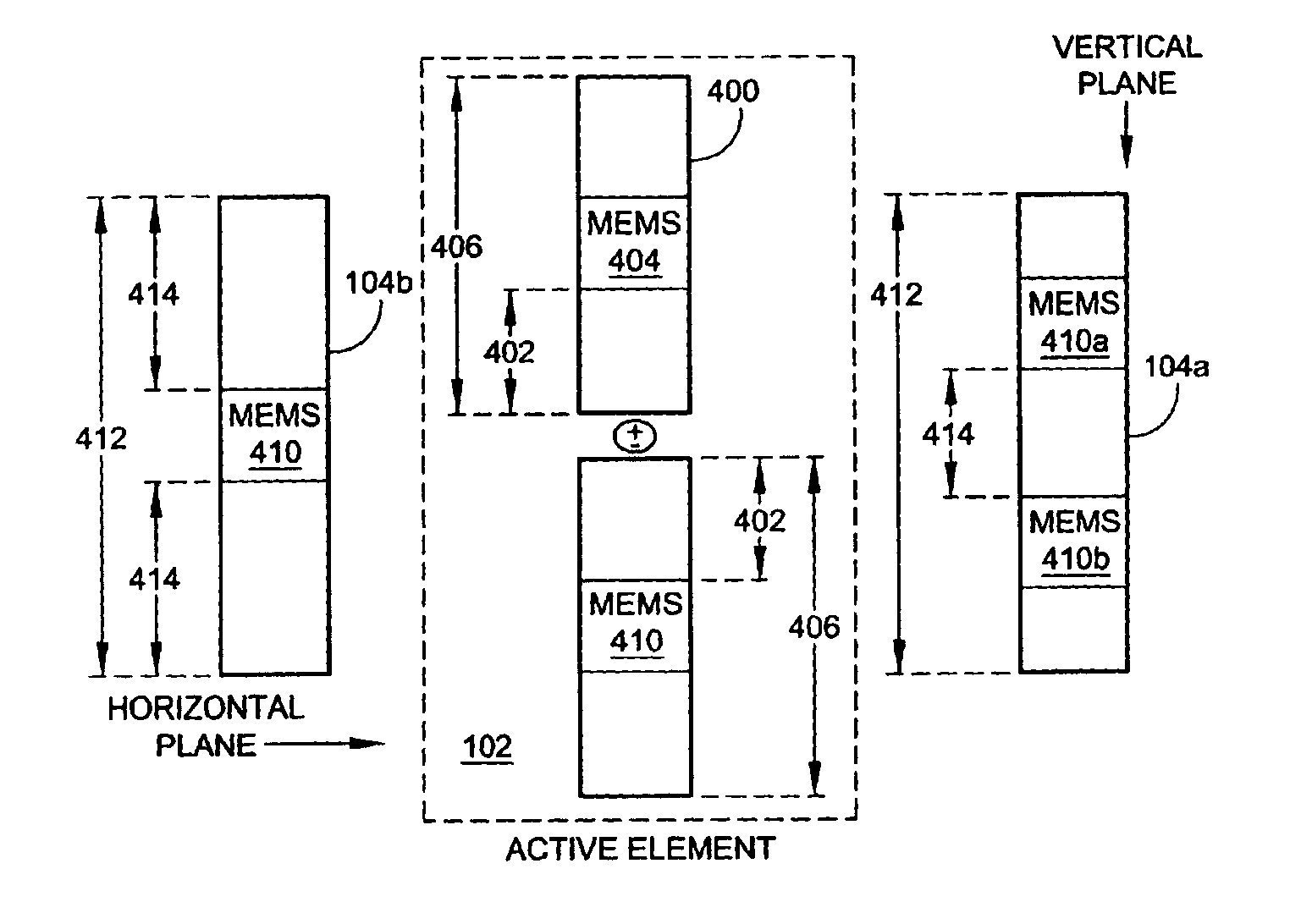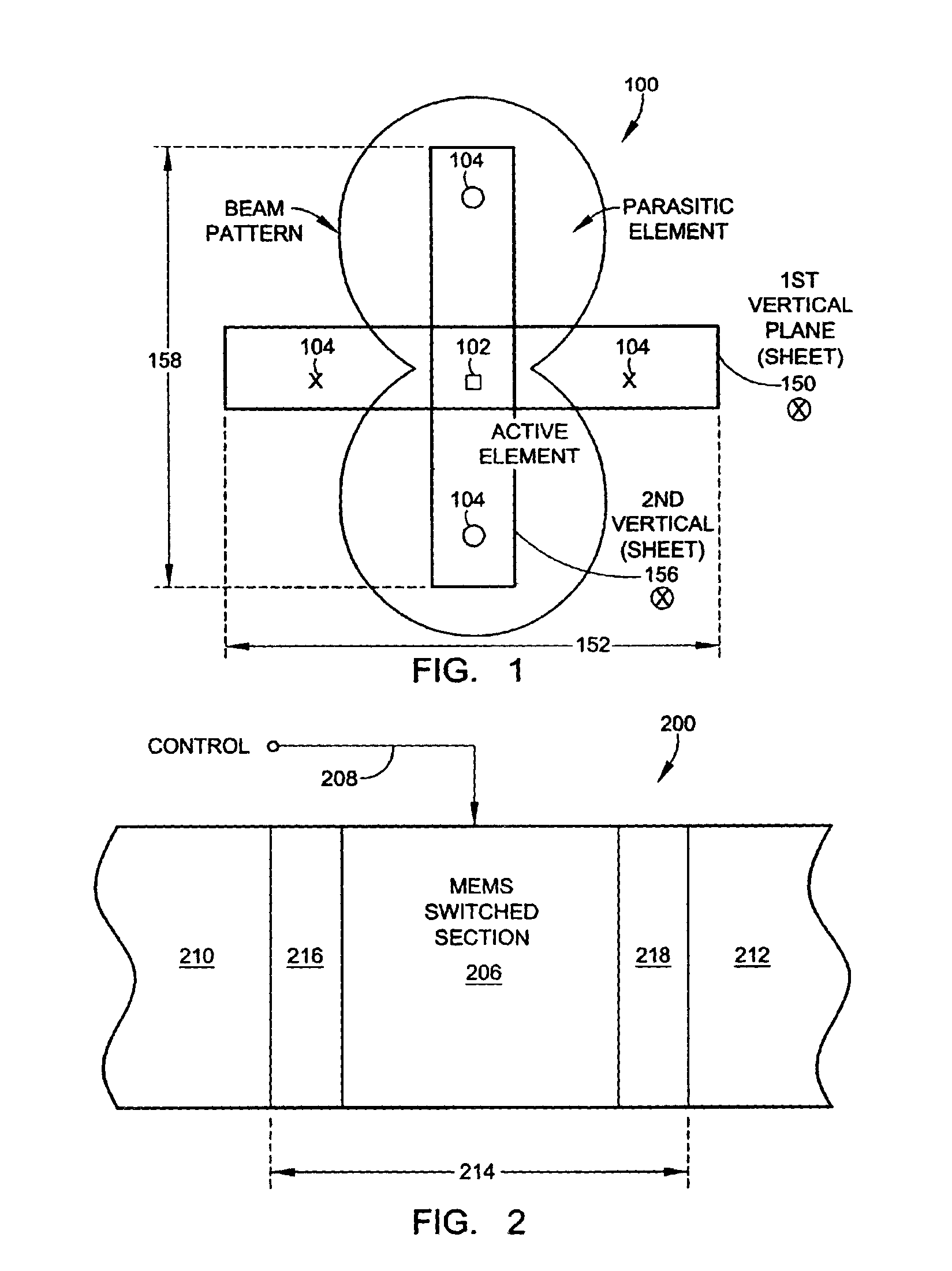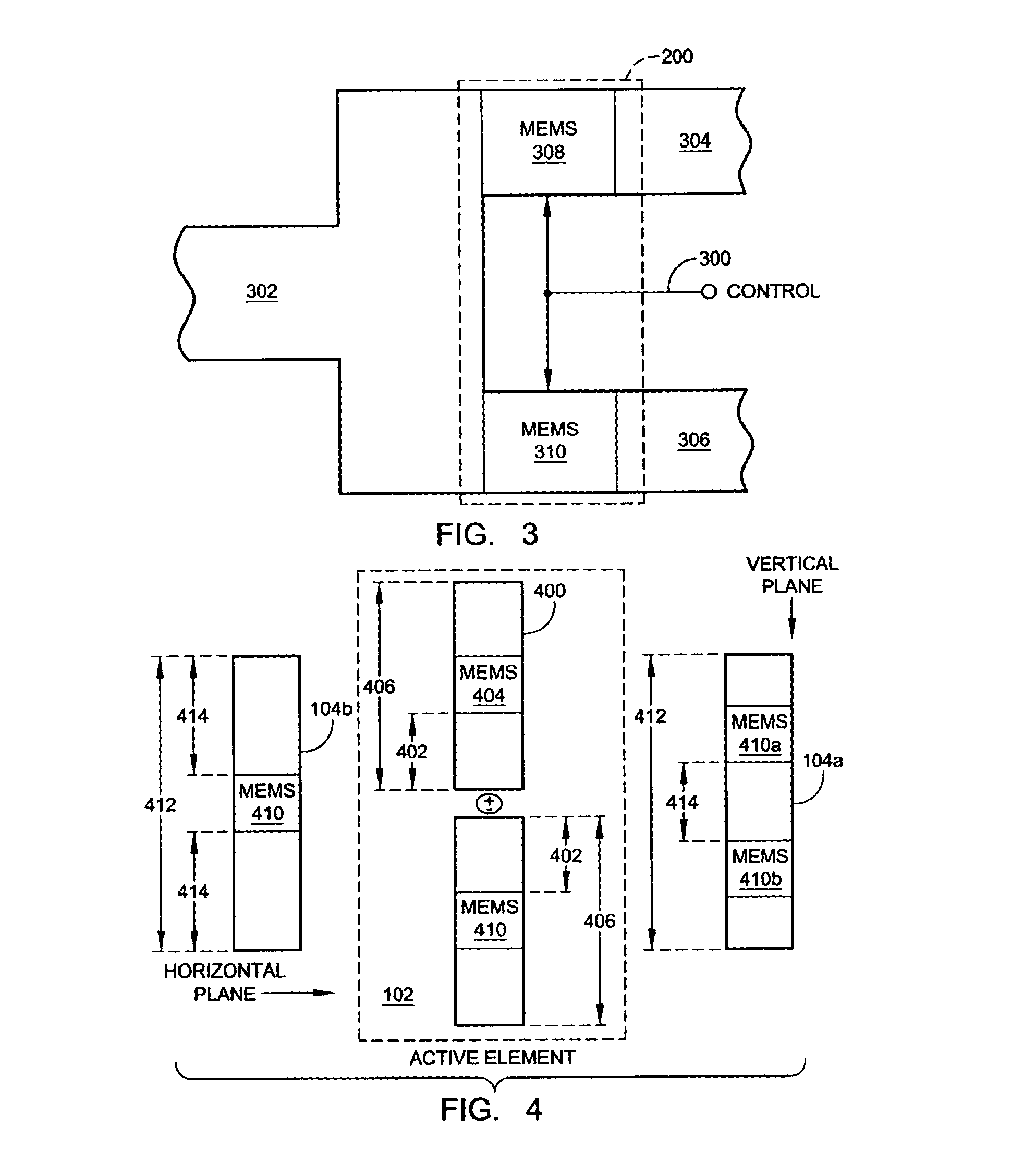Microelectromechanical switch (MEMS) antenna array
a micro-electromechanical switch and antenna array technology, applied in the direction of antennas, antenna details, antenna feed intermediates, etc., can solve the problems of affecting the performance of each antenna, and difficulty in housing a corresponding plurality of microstrip antennas
- Summary
- Abstract
- Description
- Claims
- Application Information
AI Technical Summary
Benefits of technology
Problems solved by technology
Method used
Image
Examples
Embodiment Construction
[0038]FIG. 1 is a plan view of the present invention microelectromechanical switch (MEMS) beam-steering antenna array. The antenna array 100 comprises an active element 102 including a selectively connectable MEMS and a lattice of beam-forming parasitic elements 104. Each parasitic element includes a selectively connectable MEMS, proximate to the active element 102. The “X” pattern indicates an engaged parasitic element 104 and an “O” pattern represents a disengaged parasitic element 104. FIG. 1 depicts one possible parasitic element lattice and the resulting antenna pattern.
[0039]As shown in the partially cross-sectional view of FIG. 18, each MEMS 200 includes a dielectric layer 202 and a conductive line 204, with a selectively connectable MEMS conductive section 206, formed overlying the dielectric layer.
[0040]FIG. 2 is a more detailed plan depiction of a MEMS device 200, suitable for use in either an active element or a parasitic element. The MEMS 200 has a control input on line ...
PUM
 Login to View More
Login to View More Abstract
Description
Claims
Application Information
 Login to View More
Login to View More - R&D
- Intellectual Property
- Life Sciences
- Materials
- Tech Scout
- Unparalleled Data Quality
- Higher Quality Content
- 60% Fewer Hallucinations
Browse by: Latest US Patents, China's latest patents, Technical Efficacy Thesaurus, Application Domain, Technology Topic, Popular Technical Reports.
© 2025 PatSnap. All rights reserved.Legal|Privacy policy|Modern Slavery Act Transparency Statement|Sitemap|About US| Contact US: help@patsnap.com



